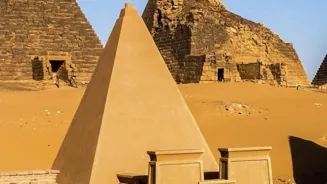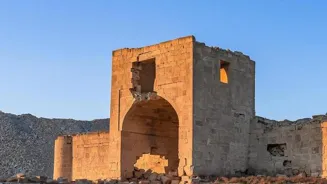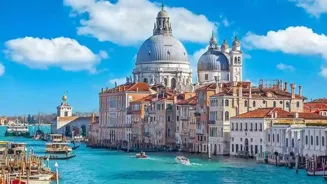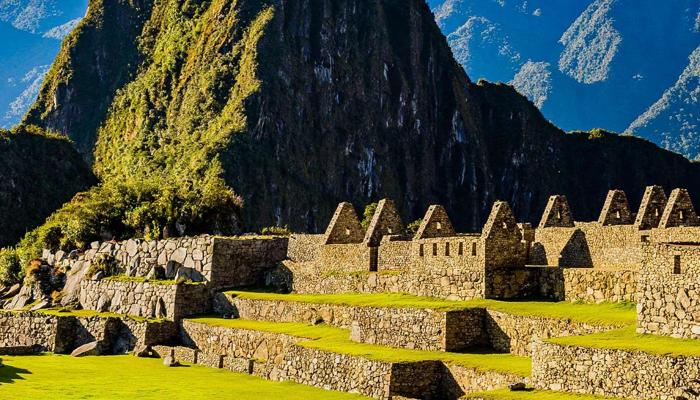Unveiling India's Ancient Wonders: Top Archaeological Sites to Explore. Dive into history's mysteries!
India, a land of colourful culture, spicy food, and bustling cities, also holds secrets from a past
so ancient, it can take your breath away. Beyond the crowded streets and modern buildings, lie the silent stories etched in stone, brick, and earth – the archaeological sites of India.
These are not just piles of old rocks; they are windows into the lives, beliefs, and achievements of people who walked this land centuries, even millennia, before us. Visiting these sites is like stepping back in time, offering a tangible connection to our shared heritage.
Forget just reading about history in textbooks; come, let's explore some of the most fascinating archaeological destinations India has to offer. Prepare to be amazed by the ingenuity, artistry, and enduring legacy of civilizations long past.
Ancient Indus Valley cities showcase remarkable urban planning
Our journey begins in the northwest, with the remnants of the Indus Valley Civilization. Imagine a time, around 2500 BCE, when cities were meticulously planned with advanced drainage systems and standardized weights and measures.
Mohenjo-daro and Harappa, now in Pakistan, were the epicenters of this urban marvel, but sites like Dholavira in Gujarat offer a glimpse into the sophistication of this Bronze Age civilization on Indian soil.
Dholavira is particularly impressive for its water conservation system, a testament to the Harappan people's understanding of their environment and their ability to adapt to it.
Walking through the excavated ruins, you can almost hear the echoes of merchants trading, artisans crafting, and families living their daily lives in this meticulously designed city. The sheer scale and technological prowess on display are sure to leave you spellbound.
The sense of wonder you'll experience will transport you to a time when cities were planned with such ingenuity.
Nalanda University: ancient hub of learning and scholarship
Next, we travel to Nalanda, in Bihar, once a celebrated center of learning that attracted scholars from across Asia. Founded in the 5th century CE, Nalanda University flourished for over 700 years, becoming a beacon of Buddhist philosophy, medicine, and other sciences.
Its vast library, they say, was so extensive that it burned for months when invaders finally destroyed the complex. Today, the excavated ruins reveal a sprawling monastic complex with individual cells for monks, lecture halls, and stupas.
Strolling through these ruins, you can almost visualize the thousands of students and teachers engaged in scholarly discussions, debates, and the pursuit of knowledge. Imagine students coming from faraway countries like Tibet, China, and Korea to gain knowledge.
Nalanda stands as a potent reminder of India's rich intellectual heritage and its contribution to the world. This place will make you feel proud of our rich history.
Exploring the majestic ruins and history of Hampi, Karnataka
Moving south, we encounter the majestic ruins of Hampi, in Karnataka, the former capital of the Vijayanagara Empire. In its heyday, in the 15th and 16th centuries, Hampi was a bustling metropolis, renowned for its wealth, grandeur, and architectural splendor.
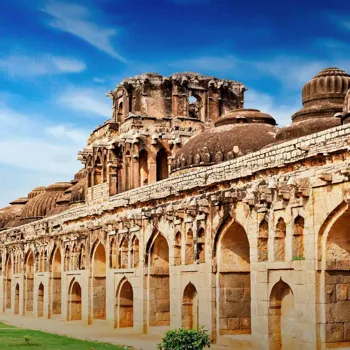
Today, the ruins of Hampi sprawl across a surreal landscape of boulder-strewn hills and fertile valleys. The Virupaksha Temple, still active and functional, is a place for tourists all over the world. The Lotus Mahal embodies the Indo-Islamic aesthetic which is worth viewing.
The ruins are a testament to the empire's might and artistic flair. Walking through the ruins, you can't help but be impressed by the scale of the city and the intricate carvings that adorn many of the structures.
The sunset views from Hemakuta Hill are breathtaking, offering a panoramic vista of Hampi's timeless beauty.
Lothal in Gujarat reveals ancient dockyard insights
Our next stop is Lothal, also in Gujarat, another important site related to the Indus Valley Civilization. Unlike Dholavira, which is known for its water management, Lothal stands out for its ingenious dockyard, one of the oldest in the world.
This discovery, dating back to around 2400 BCE, suggests that the Harappans were skilled seafarers and engaged in maritime trade with other civilizations. The layout of Lothal's dockyard tells us much about how ships were built and docked in ancient times.
You can learn about the maritime capabilities of the ancient people. The site also features a well-preserved warehouse, where goods were likely stored before being shipped. Lothal provides valuable insights into the economic activities and trade networks of the Indus Valley Civilization.
Explore Ajanta and Ellora Caves, Maharashtra: ancient rock-cut marvels depicting religious tales
Let's journey to Ajanta and Ellora Caves, in Maharashtra. These are not just archaeological sites, but also spectacular examples of ancient Indian rock-cut architecture.
Carved out of basalt cliffs, the Ajanta Caves are renowned for their vibrant murals depicting scenes from the Jataka tales, stories of the Buddha's previous lives.
The Ellora Caves, on the other hand, are a unique synthesis of Hindu, Buddhist, and Jain faiths, with cave temples dedicated to deities from all three religions. The most magnificent of the Ellora Caves is the Kailasa Temple (Cave 16), an astounding monolithic structure carved out of a single rock.
The paintings and sculptures narrate the beliefs of ancient people. The caves show how people worshipped gods.
Discover the ancient Buddhist legacy at Sanchi, Madhya Pradesh
Finally, we arrive at Sanchi, in Madhya Pradesh, home to some of the oldest Buddhist monuments in India. The Great Stupa at Sanchi, commissioned by Emperor Ashoka in the 3rd century BCE, is a magnificent example of early Buddhist architecture.
The stupa is encircled by intricately carved gateways (torans) that narrate stories from the Buddha's life and teachings. Sanchi is not only a place of historical and architectural significance but also an oasis of peace and tranquility.
Walking around the Great Stupa, you are transported to a simpler time, a time when spirituality and artistic expression went hand in hand. It is a place to reflect on the enduring legacy of Buddhism and its impact on Indian culture.
AI Generated Content. Glance/InMobi shall have no liability for the content